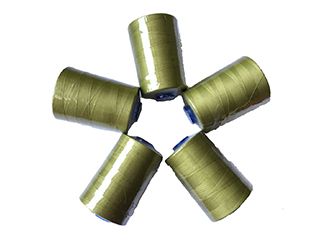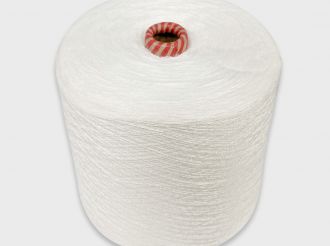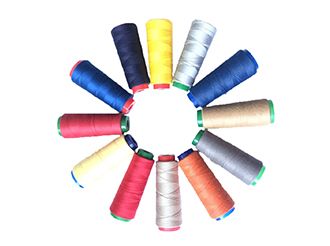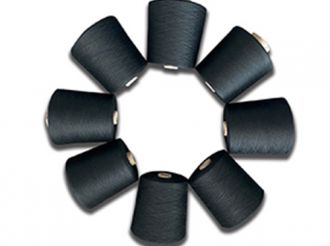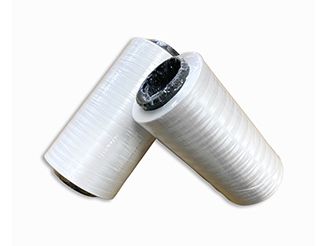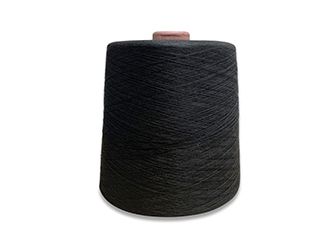The most widely used, most promising high-tech special fiber!
- 2022-07-01
At present, some companies in the international market are still keen on the investment and expansion of aramid fiber projects. For example, DuPont in the United States announced to expand the production capacity of high-performance para-aramid fiber. The new plant at the company's facilities in Cooper River will expand the production capacity of its high-performance para-aramid fiber brand "KEVLAR". Para-aramid is mainly used in industrial and military fields. For example, Yantai Spandex Co., Ltd., the largest meta-aramid fiber manufacturer and supplier in China, is used for high heat resistance such as protective clothing and filtration, with an annual output of 1500 tons of meta-aramid fiber. The capacity expansion project of Lun production line has been successfully completed in the second half of 2008 and has been put into production. The expansion and transformation have increased the company's total production capacity of meta-aramid fibers to 4,300 tons per year.
What is aramid fiber? Aramid fiber is commonly known as aramid fiber. In order to distinguish aliphatic polyamide (commonly known as nylon), aromatic polyamide is called Aramid in the United States, and the fiber it makes is called aramid fiber. The main varieties of aramid fibers are: poly-m-phenylene isophthalamide fiber, called aramid 1313, also known as meta-aramid fiber; poly-p-phenylene terephthalamide fiber, called aramid 1414 . Aramid fiber is widely used in information industry, civil construction, sealing packing, structural material of large passenger aircraft and flame-resistant and heat-resistant protective clothing, etc. According to statistics, at present, aramid products are used for bulletproof vests, helmets, etc. account for about 7%~8%, aerospace materials, sports materials account for about 40%, tire frame materials, conveyor belt materials, etc. account for about 20%, high-strength ropes, etc. 13%. As a reinforcing material, aramid fiber has its irreplaceable role. Especially in the splendid high-performance fiber family, aramid has become an advanced protective material and structure due to its excellent heat resistance, flame retardancy, electrical insulation and mechanical properties, as well as excellent varieties of ultra-high strength and high modulus. The important basic raw materials of materials not only show their talents in cutting-edge fields such as aviation, aerospace, national defense, and electronics, but also open up a wider civil space. They have become the most widely used, largest and most promising high-tech special fibers in the world today.
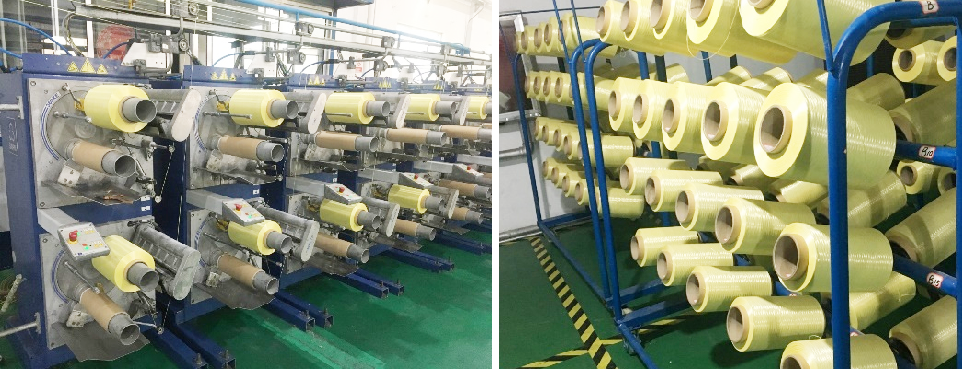
Development History of Aramid Fiber
Aramid fiber was born in the late 1960s. It was originally used as a material for space development and an important strategic material to be kept secret, adding a lot of mystery. After the end of the Cold War, aramid fiber, as a high-tech fiber material, was widely used in the field of people's livelihood, and it gradually revealed its true face. Aramid was first successfully developed and industrialized by DuPont in the United States. The meta-aramid was registered as Nomex, and the para-aramid was registered as Kevlar. The field of aramid fiber occupies a dominant position. For example, fire-resistant fiber aramid 1313 was first successfully developed by DuPont in the United States, and industrialized production was realized in 1967, and the product was registered as Nomex. This is a soft, white, slender, fluffy and lustrous fiber. Its appearance is the same as that of ordinary chemical fibers, but it is a combination of many talents and has extraordinary "special functions". Almost synchronized with the invention of fire-resistant fiber aramid 1313, the American DuPont Company developed another high-performance synthetic fiber - bulletproof fiber aramid 1414 in the late 1960s. pull). Aramid 1414 is golden yellow in appearance and looks like shiny metal threads, but it is actually a liquid crystal polymer composed of rigid long molecules. Because its molecular chain is highly oriented along the length direction and has strong inter-chain bonding, it endows the fiber with unprecedented high strength, high modulus and high temperature resistance. The discovery of aramid 1414 is considered to be an important milestone in the development of the material industry. Aramid 1414 has extremely high strength, more than 28 grams/denier, 5-6 times that of high-quality steel, 2-3 times that of steel or glass fiber, and 2 times that of steel, while the weight is only 2-3 times that of steel. 1/5. (The toughness of aramid 1414 also makes it extremely difficult to cut and process, requiring expensive special tools). For a long time, due to high investment costs and technical difficulties, only the United States, Japan and the former Soviet Union have the ability to produce. The process technology is top secret, and the products are regarded as strategic materials and strictly controlled. At present, the global aramid fiber market is mainly divided by the three major aramid fiber suppliers of DuPont Corporation, Teijin Corporation of Japan and Yantai Spandex Co., Ltd.
Classification, Morphology and Properties of Aramid Fibers
-
Classification of aramid fibers
Aramid fibers can be divided into two main types according to their different chemical structures: one is meta-aramid fiber characterized by heat resistance and flame retardancy, the full name of which is polymetaphenylene terephthalamide. , the English abbreviation is PMTA, the US trade name is Nomex, and my country is called aramid 1313; a class of para-aramid is characterized by high strength, high elastic modulus and heat resistance, the full name is polyterephthaloyl P-phenylenediamine, the English abbreviation is PPTA, the trade name is Kevlar in the United States, Technora in Japan, Twaron in the Netherlands, Tevlon in Russia, and aramid 1414 in my country.
-
Aramid fiber is a kind of high-temperature-resistant high-strength and high-elastic fiber, which has both the mechanical properties of inorganic fibers and the processing properties of organic fibers, and its density is equivalent to that of polyester fibers. At the same time, it also has excellent chemical corrosion resistance, radiation resistance, fatigue resistance, dimensional stability and other excellent properties, as well as certain adhesion properties with rubber resins. At present, the products are available in pulp and fiber forms. It has become a new material in various fields such as aerospace, rubber, resin industry, electronic and electrical equipment, transportation tools, sports equipment and civil construction. In particular, the high-performance aramid paper composite material prepared from aramid fiber can be widely used as advanced electrical insulation material, printed circuit board and electromagnetic wave protection material, which has attracted much attention.
Morphology of aramid fibers
1414 fiber is bright yellow, 1313 fiber is bright white. There are two fiber forms, short fiber (or filament) and pulp fiber (or precipitant fiber). Filaments are mainly used in textile, rubber and other fields, and short fibers and pulp fibers are used in the paper industry.
Application characteristics of aramid
3.1 Non-conductivity
In modern projects, such as subways, tunnels, electrified railways and industrial plants, etc., all have high requirements for insulation. In the reinforcement and reinforcement of these projects, aramid fibers have an absolute advantage, and also provide a solution for these fields. The best chance to choose.
3.2 Good corrosion resistance
In particular, the strong alkali corrosion resistance is incomparable with other FRP composite materials. Due to the strong corrosiveness of the concrete structure in seawater, the main reason is that there are more chloride ions in it, resulting in carbonization of the concrete and corrosion and expansion of the steel bar. Therefore, in the reinforcement and protection of some seaport terminal projects, aramid fiber is the best choice.
3.3 Good impact resistance
Since the elastic modulus of aramid fiber is 118Gpa, its ductility is particularly good, and its elongation rate is 1.8%, so it was initially used as a military product abroad, such as body armor. It is used to reinforce some structures with strict impact requirements, such as the piers of the main channel.
3.4 Good anti-dynamic load and anti-fatigue performance
Although the tensile strength of carbon fiber is very high, because it is a brittle material, it can only withstand long-term static load. If it is subjected to dynamic load for a long time, its strength cannot be guaranteed. Aramid fiber is not subject to this limitation. It is mainly used in military products and is the main material of body armor. Because of its good toughness, its corresponding fatigue resistance is very good. In addition, the shear resistance of aramid fiber is also the strongest among all FRP materials.
3.5 Construction is convenient
The main steps are as follows: surface treatment - brushing primer - bottom layer impregnating resin - pasting aramid fabric - outer layer impregnating resin - surface protection, and the operation is very simple. There is no need for large-scale hoisting machinery and equipment, and generally no chamfering is required. The chamfering of a square column only needs to be 10 ram, because aramid is an organic material, which has good wettability with resin and a short curing time. For a few hours, similar other fibers take one to two weeks.
The application field of aramid fabric in structural reinforcement engineering
-
Beam
Mainly for bridges and civil buildings or industrial delivery rooms, the reinforcement methods include flexural resistance and shear resistance. When flexural reinforcement is carried out, the fiber direction of the aramid fabric is consistent with the axial direction of the beam, and it is generally attached to the tension side of the beam. Improve the bearing capacity of the beam. According to relevant tests, as long as the beam is not an over-reinforced beam, one layer of AK-40 can increase the load by about 30%, and two layers can increase the load by about 40%; during shear reinforcement, the fiber direction of the aramid fabric is the same as the The beam axis is vertical.
-
Pillars
Aramid fabric is an ideal column reinforcement material. First, because the elastic modulus of aramid fiber is 118Gpa, it has better ductility than carbon fiber (elastic mold 230Gpa); secondly, only l0mm is generally required for edge grinding. Around, generally do not need to be polished, and carbon fiber needs about 30rnm. Aramid can save a lot of man-hours. Finally, since aramid cloth is a soft cloth, it follows very well, especially for caps with irregular shapes, aramid cloth is an ideal reinforcement material.
-
Masonry, board
Generally, the reinforcement clearance of the board is relatively high, and the reinforcement should not affect its appearance, so it is an ideal choice to use a thin and soft FRP composite material for reinforcement.
-
Chimneys, water towers
Due to the high-altitude structures like chimney water towers, reinforcement and maintenance are particularly difficult. Traditional methods are basically difficult to solve such problems. Aramid fibers with light weight, high strength, corrosion resistance and durability are a very good choose.
Subway Tunnel
Since subways and tunnels are structures that work underground, their forces are different from those on the ground. There are soil forces on the top of the cave and in the tunnel test, and it also has clearance requirements, so cracks are carried out. When repairing, the traditional reinforcement method is very unlikely. Reinforcement and maintenance with aramid fabric can meet its various requirements, because the arch or sidewall cracks in subways or tunnels are generally multi-directional and irregular. This requires that its repair material must have good shear resistance, and aramid is a non-conductive FRP material, so aramid fabric is the best choice in tunnel subway engineering.
The development of differentiated, functional and special high-performance fibers and special fibers is the main research topic in the 21st century. As a typical high-performance fiber, aramid fiber will surely be developed in an all-round way. Modern national defense, fire protection, chemical industry, metallurgy, hydropower, geology and mining, nuclear industry and other industries demand special materials with heat insulation, ventilation, flame retardant, temperature resistance and corrosion resistance, which will also create a potential huge market. Through modification, new molding technology and differentiated research, further improve its compressive strength, fatigue strength, flexural modulus, water and light resistance and surface adhesion, improve its performance, improve processing conditions, and reduce production costs, it can be expected With the innovation of aramid fiber production technology and application technology, functional textiles related to aramid fiber will be more widely used. Especially with the rapid development of my country's national economy, the maintenance, reinforcement and transformation of various bridges and building structures will become the focus of construction projects now and for a long period of time in the future.

At present, the commonly used reinforcement methods in China mainly include the following methods: fiber cloth composite material reinforcement, bonding steel plates, external prestressing and expanding cross-section methods. Aramid fiber composite material has distinct characteristics, and because of its obvious advantages in cost performance, it is believed that it will be more and more widely used and become the most widely used new technology for the reinforcement of old dangerous bridges. In addition, the demand for this product in the military and defense fields has also increased, which has further expanded the research and development of new aramid fibers by companies in the international market. Aramid fiber KelarXP. KelarXP has improved ballistic resistance through new fabric technology and new coating technology, and its comfort as a protective fabric is excellent. In the test of DuPont and its independent organization, the bulletproof vest composed of 11 layers of KelarXP can block bullets in the third layer, and the remaining layers are used to buffer the impact of bullets, which can reduce the user's trauma. KelarXP can disperse 15% of the impact of bullets when used with a 44 caliber pistol, and the weight of the vest is at least 10% lighter. According to DuPont, the lightweight materials currently on the market usually refer to vests with 20-40 layers, which require a minimum of 9 layers to stop bullets.
